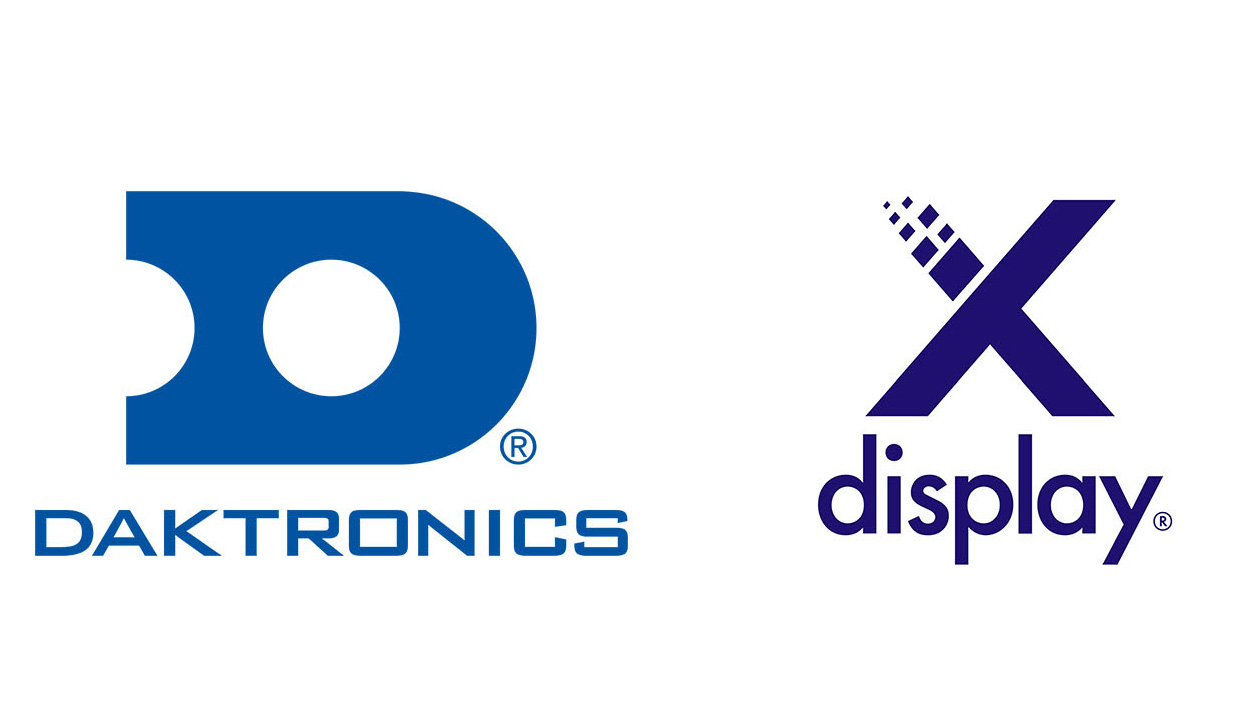AV-over-IP for Enterprise Organizations
How companies can take advantage of the opportunities created as AV converges into IT.

AV-over-IP simply means transmission of audio-visual information via data packets over an Internet Protocol. In the AV industry it refers to using the network rather than using traditional audio-visual signal transmission. It has been around for quite some time now, primarily within the AV industry. Unfortunately, it is a topic that is often misunderstood, simply because it's primarily been seen from the perspective of AV technologies, traditionally dominated by proprietary and specialized hardware devices. This has left many with a shortsighted view of AV-over-IP that doesn’t capture the full potential of the technology.
It's time to address this because we are now in the midst of the fourth industrial revolution. Driven by breakthroughs in AI, IoT, big data, automation, AR and VR, it has changed the way organizations use screens to engage, educate and inform and, has put AV-over-IP in a critical position to drive transformation in today’s business world. This article aims to help IT professionals better understand AV-over-IP and thereby help them leverage the transformative opportunities the fourth industrial revolution has created.
AV has Converged Into IT
Digital transformation has made operations at all business levels more network-centric, and as anyone undertaking a digital transformation project knows, screens and the data and information displayed on them are vital to the operational efficiency of an enterprise. Organizations are significantly increasing their use of visual display applications for a wide variety of needs—from screens in training rooms and huddle rooms to screens used for team KPIs, process automation, network and security monitoring for mission-critical operations and more.
In today’s business landscape, information is accessed and shared primarily through network protocols. This of course includes AV and the visual content displayed on screens throughout an enterprise. The networks as well as services and applications dependent on the networks have come increasingly under the domain of IT. In other words, AV and IT use shared infrastructure: the network, which in every enterprise is owned by IT. The result is that AV has converged into IT.
[ LG & Userful Offer Software-Defined AVoIP Solution for Enterprise ]
AV-over-IP is Growing Fast
The demand for visual content in all aspects of business is resulting in skyrocketing growth for AV-over-IP. In fact, AV-over-IP has come to dominate the AV industry and research reports have noted it is growing faster than just about any other segment in the AV or IT industry.
A 2021 Maia Research report about the global AV-over-IP market forecasts a growth from $3B to $51B by 2027.What’s even more interesting is that according to this report, 85 per cent of that market comprises enterprise organizations in the corporate, education and government sectors. AV-over-IP is enjoying rapid growth and that growth is driven largely by enterprise organizations seeking to leverage visual content to support their digital transformation projects--to engage, inform, educate and even entertain. Another worthy note, Maia research highlights the rapid growth of software-based AV-over-IP solutions, which it expects will grow significantly faster than incumbent hardware-based solutions. Among the reasons reports like Maia and HNY cite for this is the scalability, flexibility, and manageability of software-based solutions.
A daily selection of features, industry news, and analysis for AV/IT professionals. Sign up below.
Many Solutions Use IP, But Not All are Built for IT
Any IT department today looking to distribute video content and display applications across their organization will of course be looking at an AV-over-IP solution, however there are a few important distinctions to keep in mind: not all AV-over-IP solutions are the same.
A traditional static AV approach to AV-over-IP involves proprietary hardware—encoders and decoders that connect over an IP network. An encoder sits on the content side and connects through the network to a decoder which is connected to the display. This is using IP but it is not using the IT infrastructure and standards that IT professionals rely upon to ensure a secure, scalable and efficiently managed operation.
Static AV-over-IP solutions are generally single-purposed and detached from the IT framework, resulting in siloed deployments that put unnecessary management burdens on IT teams, can increase costs in cabling and power, often carry additional risks around network security and leaves customers open to the risk of vendor lock-in. All of these add up to a higher Total Cost of Ownership (TCO)--a cost evaluation model that includes not just the upfront costs of a solution, but also the ongoing operating costs over time.
Alternatively, there are software-defined AV-over-IP solutions, which integrate directly with existing IT frameworks, operate on commercially available off the shelf hardware, and run over the network without additional encoders and decoders to transmit the signal. With this approach, the content source is connected directly through the network to the displays with no additional transmission layers.
Although all AV-over-IP solutions use both software and hardware, there are easy ways to differentiate software-defined solutions from hardware-defined solutions. First, the company behind a software defined solution should be focused on using software to drive features and functionality and not tie features to specific hardware. Second, the solution must operate on commercially available off-the-shelf hardware, rather than proprietary hardware. Finally, any software defined solution should allow for a management layer that gives end to end control over an integrated solution.
A software defined solution of this kind offers more flexibility, is more open, and easier to integrate with third-party applications ensuring AV deployments are no longer siloed. By eliminating dependence on a specific set of specialized hardware it reduces vendor lock-in and avoids some of the unacceptable delays that supply chain issues have created for proprietary hardware. It also frees customers from expensive hardware lifecycle management issues. All of this results in a lower TCO.
Why a Software-defined Platform for AV-over-IP
IT professionals have known for years that it’s software that’s driving value and return on investment, not hardware, which has long been commoditized. The question however has been whether the higher resolution needed for video, and the real-time interactivity requirements of many AV applications could lend themselves to network delivery using commercially available off-the-shelf hardware and software.
The answer is that it certainly can. This has been made possible by the growth in compute power, storage, and bandwidth as evidenced by Moore’s Law (which accounts for the continued growth in processing power), Butter’s Law (relating to the increase in network transmission speeds) and Kryder’s Law (which accounts for increased storage capacity).

Those seeking AV-over-IP solutions for the enterprise today can count on software-defined solutions to deliver real-time content with UHD and larger video content over the network using commercially available off-the-shelf hardware. They can count on it not just for a single application, but across a wide variety of use cases, which is one of the reasons an AV-over-IP platform is attractive.
The benefits a platform brings to the enterprise is in scalability and manageability. An AV-over-IP platform is different than just an AV-over-IP application, because it can run multiple AV applications--supporting meeting room displays, signage screens, mission critical video walls. As a result, a platform can scale to meet a wide variety of visual display requirements across the enterprise. It also offers better management by separating the infrastructure layer, which IT should manage and control, from the applications themselves, which functional departments need to control in order to effectively deliver content and services. A platform gives IT end-to-end control and gives individual users more limited access to applications they need.
Essential Roles
AV and IT play essential roles in today’s enterprise landscape and AV-over-IP is a crucial element in converging the two. AV and IT professionals in charge of deploying visual display applications and services within their own organization or as system integrators, should now be looking to software-defined solutions that provide the security, scalability, interoperability and manageability enterprises need. Software-defined AV-over-IP solutions integrate directly with existing IT frameworks, operate on IT standards and run over the network without additional encoders and decoders to transmit the signal. As the Maia research report referenced earlier outlines, it is software that is driving value and return on investment in AV-over-IP which is why software defined-solutions are growing faster than hardware-based AV-over-IP, and a key reason they are expected to continue to do so into the future.

John Marshall is CEO & Board Member at Userful, a leading provider of AV-over-IP solutions for enhanced video communication. He focuses on developing and implementing strategic growth initiatives for Userful; launching the company into new markets, and expansion through new technology and channel partnerships. He has more than 25 years of experience building innovative, market-leading organizations.
